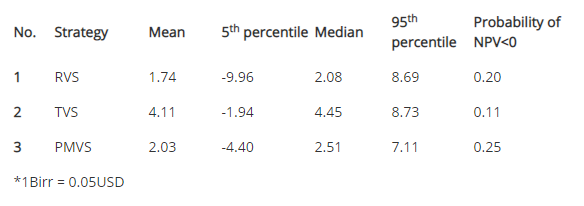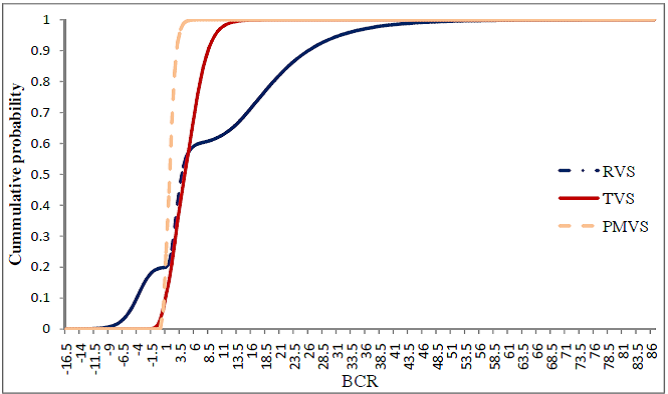Home \ Knowledge Hub \ Focus on \ Focus On… Economic evaluation of FMD control in endemic setting of Ethiopia


01 Jan 2017
Focus On… Economic evaluation of FMD control in endemic setting of Ethiopia
SHARE

WUDU TEMESGEN JEMBERU
Department of Veterinary Epidemiology and Public Health, College of Veterinary Medicine and Animal Sciences, University of Gondar, P.O.Box 196, Gondar, Ethiopia
Foot and mouth disease (FMD) is considered as the most economically important disease of livestock due to its impact on livestock production and international trade (James and Rushton, 2002). The disease is highly transmissible, making it difficult to contain within local and national borders. With ever greater international interconnectedness, management of the disease is increasingly problematic. Despite the recognition of FMD as the most important livestock disease in the world, the economic return from its control is not always positive in all countries (Knight-Jones and Rushton, 2013). In FMD free countries, control of outbreak incursions could involve huge costs, but generates positive returns to the national economy (Knight-Jones and Rushton, 2013). In endemic countries, it is thought that the cost effectiveness of control depends on the prevailing production systems and the export potential of the country. Countries with a developed intensive livestock sector and a potential of export of animal and animal products are more likely to generate a positive return from FMD control.
Ethiopia is one of the FMD endemic countries where the livestock system is dominantly subsistence oriented. A study was done to evaluate the economic returns of FMD control and determine a control strategy that would be more economical under such subsistence dominated livestock system.
A set of FMD control strategies that could be feasible under the Ethiopia situation and aimed at eliminating the endemicity of the disease from the country, were considered for the economic evaluation study. Three potential alternative FMD control strategies including: 1) ring vaccination (reactive vaccination around outbreak area supported by animal movement restrictions, 2) targeted vaccination (annual preventive vaccination in high risk areas plus ring vaccination in the rest of the country), and 3) preventive mass vaccination (annual preventive vaccination of the whole national cattle population) were evaluated by comparing their cost and benefits with the base line scenario of no official control. This cost-benefit analysis showed that on average all the three evaluated alternative control strategies were economically profitable as demonstrated by the positive net present values. The ranges in the net present values (NPVs) were, however, vary wide, including negative values indicating possibility of loss as well (Table 1).
Table 1. The distributions of the 10 years NPVs for different control strategies (in billion birr*)

When the three alternative control strategies were compared, the targeted vaccination strategy was the most economical strategy with a median benefit cost ratio of 4.29 (90% CR: 0.29-9.63). It was also the least risky strategy with 11% chance of a benefit cost ratio of less than one (i.e., loss). Ring vaccination strategy was the second best strategy in terms of economic efficiency with median benefit cost ratio of 3.7 (90% central range (CR) -5.4-32.6). The distribution in the economic returns from this strategy, however, indicates a high level of uncertainty with a high risk of facing negative return values (Figure 1). With its relatively low financial outlay requirement, this strategy can be an attractive strategy for a for a decision maker with a lower availability of resources. Preventive mass vaccination strategy showed the least economic performance with median benefit cost ratio of 1.63 (90% CR 0.47-3.27). Moreover, it requires a large sum of initial investment and a huge amount of vaccine resource which could be difficult in the Ethiopian situation. Unlike the other strategies which have positive net returns starting in the first year of control, the payback period for this strategy was about 5 years. These considerations make it the least preferred strategy from resource constrained countries like Ethiopia.

The benefits considered in this cost-benefit analysis were mainly related to avoided production losses. Full control benefits in terms of export were not captured because of difficulty of ascribing export impact of the disease exclusively to FMD as other several transboundy diseases are endemic in the country. Despite this, it appears that FMD control in subsistence livestock production can be profitable only considering production loss. This is against the common thinking that FMD is primarily a disease of trade importance. It is often claimed that the return from FMD control from the perspective of production losses, especially in subsistence systems, is low (Perry et al., 2003; Rushton, 2009, 2008) and that the economic analysis for FMD control should be more concerned with its trade effect than production effects (Randolph et al., 2000).
In conclusion, economic returns to FMD control in the endemic situation of Ethiopia where the dominant livestock production is dominantly subsistence was seen to be on average positive. This was true without full consideration of trade benefits. Among the three alternative control options that were thought to be reasonably feasible to be implemented in Ethiopia, the strategy of targeted vaccination, which involves intensive vaccination in high FMD risk areas with ring vaccination and movement restriction during outbreaks in the rest of the country, provides the best economic returns with low risk of loss. This finding could help in decision making with regard to FMD control in Ethiopia and other endemic countries with similar livestock production system and socioeconomic conditions.
References
James, A.D., Rushton, J., 2002. The economics of foot and mouth disease. Rev. Sci. Tech. 21, 637–644.
Knight-Jones, T.J.D., Rushton, J., 2013. The economic impacts of foot and mouth disease – what are they, how big are they and where do they occur? Prev. Vet. Med. 112, 161–73.
Perry, B.D., Randolph, T.F., Ashley, S., Chimedza, R., Forman, T., Morrison, J., Poulton, C., Sibanda, L., Stevens, C., Tebele, N., Yngström, I., 2003. The impact and poverty reduction implications of foot and mouth disease control in southern Africa , with special reference to Zimbabwe. Intermational Livestock Research Institute, Nairobi, Kenya.
Randolph, T., Perry, B., Horst, H., Agbayani, A., Benigno, C., Kalpravidh, W., Gleason, L., 2000. Improving The Economic Analysis of Control Interventions for Diseases of Trade: Lessons From Two Case Studies of FMD Control in South East Asia., in: Proceedings of the 9th International Symposium on Veterinary Epidemiology and Economics, 2000. pp. 3–5.
Rushton, J., 2008. Economic aspects of foot and mouth disease in Bolivia Economic assessments of the control of foot and mouth disease in Bolivia. Rev. Sci. Tech. 27, 759–769.
Rushton, J., 2009. The economics of animal health and production. CABI international, Wallingford.
The views and opinions expressed in this article are those of the author.
WUDU TEMESGEN JEMBERU
Department of Veterinary Epidemiology and Public Health, College of Veterinary Medicine and Animal Sciences, University of Gondar, P.O.Box 196, Gondar, Ethiopia
The views and opinions expressed in this article are those of the author.

